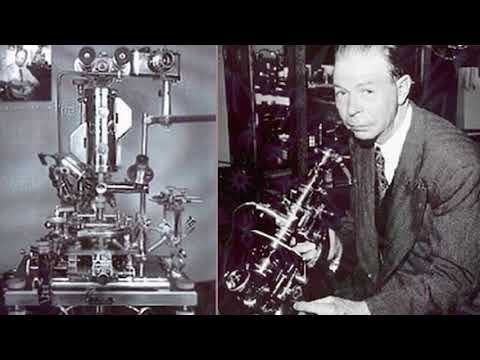Royal Raymond Rife is an influential name in the field of Radionics, with his devices and discoveries remaining in use to this day. However, his life is one of the least well documented of the major names in the field.
Early Life
Born in 1888 in Elkhorn, Nebraska, Royal Raymond Rife, to his parents Royal Raymond Rifle, Sr. and Ida May Chaney. With the poor documentation of his life, and much of his work only gaining interest until after his death much of his biographical information is debated and difficult to verify.
Noted as an inquisitive mind in his early years, it is attested he attended John Hopkins University and studied Bacteriology. Sources also note that he would also attend the University of Heidelberg, where he would receive an honorary doctorate.
Royal Rife would tinker and design various devices for his experiments. One of note was the creation of several optical compound microscopes. Which allowed him to observe and document, using movie cameras, to create time-lapse microscopies of various bacteria. Other microscopes of his design would include polarizers. His most impressive, “Universal”, microscope capable of a claimed total magnification 60,000 times. However, this is an inflated figure. Though unverified, his laboratories were said to be well equipped for the time with various surgery, pathology, and machining equipment.
Development of the Rife Machine

However, his most noted work would come from his designing of, and experimentation with, his Rife Machine. Sometime between 1920 and 1930 Rife would begin his work with bacteria. By 1931 it is said that Rife had isolated what he called the “BX Cancer Virus.” Whatever Rife was working with, due to the limitations of optical microscopes, it is unlikely that he was observing what we would normally call a virus.
Using various frequencies of light Rife attacked the microbes and reported that he had successfully destroyed them. From this Rife developed his theory of a “Mortal Oscillatory Rate”. A frequency that he claimed could destroy specific bacteria without harming human tissue.
Rife would go on to attempt to legitimize his claims with the rest of the scientific community. However, he would be rejected and discredited by other researchers in the 1950’s. Despite this Rife continued to promote his work. In the 1950’s he would work to develop a new technology. Working with his engineering assistant, John Crane, Rife would develop a device to deliver resonance waves directly to the bodying using electrodes. Crane would go on to publish much of this work despite continued rejection by the wider scientific community.
Various conspiracy theories abound about why Rife was unsuccessful in gaining more widespread acceptance of his work. Ranging from bribes, lawsuits, and assassination. However, Rife’s work would remain largely unexamined until the 1980’s. Many of the conspiracy theories revolve around suppression of the cure for cancer. Rife himself believed that the American Medical Association was responsible for his status. He called those who rejected his work, “brainwashed and intimidated.“
Today there is promising research in the field of Oncology that suggests cancer cells may be hindered using electromagnetic fields. Despite this, these studies are very speculative and in need of further testing. No Radionics device has been proven to cure cancer or any other disease.
Following various reported legal troubles, stemming from his claims about his devices, Rife would pass at the age of 83 on August 5th, 1971.



